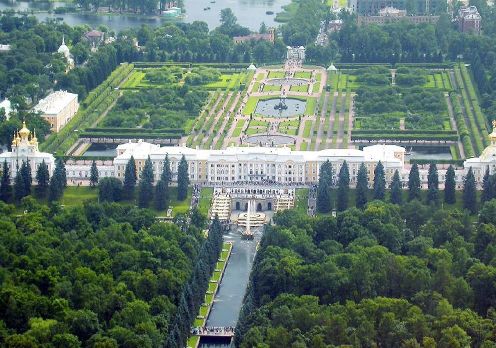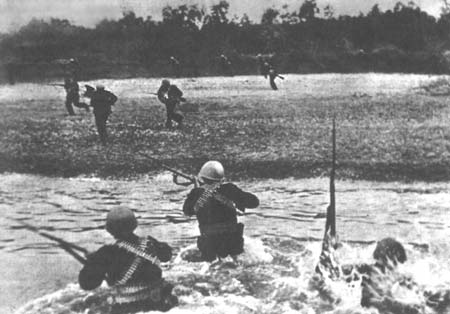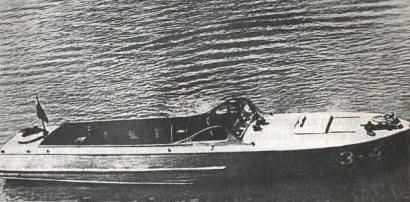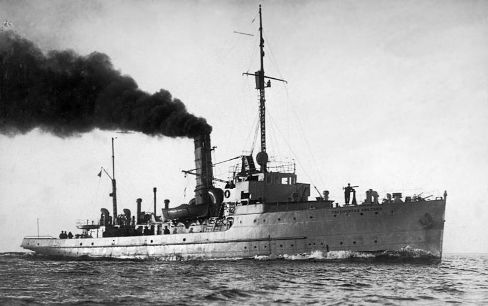

Location: Leningrad Oblast Map
Constructed: 1714
Peterhof Palace, more accurately known as the Grand Palace, is the central element of the famous Peterhof palace and park complex, located in the Petrodvorets district of St. Petersburg on the southern shore of the Gulf of Finland. This complex is often called the "Russian Versailles" due to its opulence and inspiration from French royal residences. The palace harmoniously unites the Upper Garden and the Lower Park, forming a single ensemble, a UNESCO World Heritage Site. Below, I will describe in detail its history, architecture, interiors, gardens and fountains, as well as its current state.
Construction of the palace began on the initiative of Peter the
Great between 1714 and 1725. Initially, it was a relatively modest
two-story palace in the Petrine Baroque style, designed by
architects Jean-Baptiste Le Blond and Isaac Braunstein. Peter the
Great personally participated in the planning, drawing inspiration
from European residences such as Versailles. The palace was
conceived as a summer residence for relaxation and receptions after
the Battle of Poltava.
From 1745 to 1752, under Empress
Elizabeth Petrovna, the palace was significantly rebuilt according
to designs by Bartolomeo Rastrelli. He added a central building,
galleries, and wings, transforming it into a grandiose Baroque
structure. This made the palace a symbol of the opulence of the
Russian monarchy. In the 19th century, the interiors were renovated
under Nicholas I, adding elements of classical style. During World
War II, the palace was severely damaged: Nazi troops occupied
Peterhof, and the building was damaged by bombing and fire. After
the war, from 1945 to 1964, a large-scale restoration was carried
out, restoring its original appearance using archival documents and
photographs. Today, the palace is a museum open to visitors.
The Grand Palace is a three-story building, approximately 268 meters long, rising on a 16-meter ledge above the Lower Park. It consists of a central building with a dome crowned with a gilded vase, and two side wings (the Church Wing and the Coat of Arms Wing), connected by galleries. The facades are painted yellow and white with abundant gilding, columns, pilasters, and sculptures. The northern facade overlooks the Upper Garden, while the southern one faces the Grand Cascade and the Gulf of Finland, creating a spectacular view from the sea. The architectural style combines Baroque with Rococo elements: curved lines, decorative elements, balustrades, and statues. The palace blends seamlessly into the landscape, emphasizing its connection with nature and water. A distinctive feature is the lack of a foundation in the traditional sense—the building stands on a natural hill.
The palace's interiors are striking in their luxury and variety. It
contains approximately 30 halls, decorated in Rastrelli's Baroque style.
The main rooms are:
Dance (Ballroom): The largest, with gilded
carvings, mirrors, crystal chandeliers, and ceiling paintings. The floor
is inlaid parquet made of precious wood.
Throne Room: Decorated with
portraits of emperors, gold ornaments, and the throne of Elizabeth
Petrovna.
Chesme Hall: Dedicated to the Battle of Chesme, with ship
models and battle paintings. Chinese cabinets: With lacquered furniture,
porcelain, and oriental motifs.
Peter the Great's oak cabinet:
Retains its original oak finish, complete with portraits and relics.
The walls of many rooms are covered with gilded carvings, mirrors
(creating the illusion of infinity), and paintings on mythological
themes. The overall atmosphere is one of dynamic luxury, with elements
of gold, marble, and silk. Over 90% of the original elements were
restored during the restoration.
Grand Cascade of Peterhof- Petrodvorets is an enormous complex of fountains in the center of the royal palace. It is an outstanding example of Baroque architecture and one of the most famous fountains in the World. Initially it was erected under orders of Peter I the Great with the main Palace. Its construction began in May 1716 and on July 13, 1721 first trial run of water was held in the presence of the Russian emperor himself. But the work on cascade sculptures and decorations continued. In the Center of the Grand Cascade of Peterhof is a Lower or Large grotto. Two cascading stairs with seven steps surround the area around the grotto. Stairs are decorated with gilded arms, sculptures and reliefs. The lowest fountain in the complex is a fountain known as a Samson Fountain after its central sculpture of Samson.
Fountain Samson
In 1735 Grand Cascade of Peterhof- Petrodvorets complex got its famous sculpture of Samson that rips the jaw of lion. It was a reference to famous Battle of Poltava between Russian armies under leadership (and direct participation) of Peter the Great and Charles XII of Sweden. It occurred on 27 June of 1709. Russian Orthodox Church celebrated memory of the Biblical Old Testament hero Samson. Lion in the sculpture represents Swedish Empire those royal coat of arms contained lion as its symbol. The idea of the sculpture belonged to architect B. Rastrelli, while the base was designed by architect M. Zemcov. In 1802 lead sculpture designed by Mikhail Kozlovsky was replaced by a bronze copy. During German occupation during World War II the statue of Samson was stolen along with other artefacts from Peterhof. Some evidence suggest that they were used simply as a scrap metal for military purposes. After a war an exact copy of Samson was made. It was completed in 1947 and opened just two years after the end of World War II. Fountain Samson is also the most powerful in the whole complex of the Grand Cascade. The height of its water jet column reaches a height of 21 meters.
Open: June- Sept: 10:30am- 5pm
Closed: Wednesday
Catherine Wing: May- Sept 10:30am- 5pm
Oct- April: Sat- Sun 10:30am- 5pm
Closed Thursdays
Palace of Monplaisir or "my pleasure" in French is the original residence of Peter the Great that started this magnificent palace complex. This small residence sits on the eastern side of the Lower Park. It was designed by the tsar Peter himself. If you get here by boat this is the first thing you will see. Tsar usually got here by boat from a ship since the waters here are fairly shallow. It was constructed in 1714- 23 and became the preferred residence of an emperor. Here he gathered his closest friends and here he brought his personal art collection of the 17th century art. Catherine I, his wife usually cooked in the palace kitchen.
Peter's daughter Elizabeth added the Catherine Wing when future Catherine II married her son Peter III. The marriage was loveless and Catherine overthrew her unloved husband in the coup headed by the Orlov's brothers. It was here that Catherine found out about success of this operation.
 Peter the Great had only son Alexei. Young man was well educated
and possessed a sharp mind. He however despised autocratic rule of his father
and disagreed with some of the policies that he felt damaged Russian traditional
way of life. He married a simple Russian woman and even escaped to Europe.
Brought back from to Saint Petersburg son tried to restore relationship with his
father. It didn't work. Accused of treason and attempts to overthrow a ruling
emperor Alexei was executed on the orders of his father Peter the Great. This
famous painting made in 1871 by Russian artists N. N. Ge depicts interrogation
of a young prince in the Palace Monplaisir. We don't know for sure if it
happened here, but the interior of palace is certainly that of favorite Peter's
residence. Today you can see this work of art in Moscow in Tretyakov Gallery.
Peter the Great had only son Alexei. Young man was well educated
and possessed a sharp mind. He however despised autocratic rule of his father
and disagreed with some of the policies that he felt damaged Russian traditional
way of life. He married a simple Russian woman and even escaped to Europe.
Brought back from to Saint Petersburg son tried to restore relationship with his
father. It didn't work. Accused of treason and attempts to overthrow a ruling
emperor Alexei was executed on the orders of his father Peter the Great. This
famous painting made in 1871 by Russian artists N. N. Ge depicts interrogation
of a young prince in the Palace Monplaisir. We don't know for sure if it
happened here, but the interior of palace is certainly that of favorite Peter's
residence. Today you can see this work of art in Moscow in Tretyakov Gallery.
May- Sept: 10:30am- 5pm
Oct- Apr: 10:30am- 5pm
Closed: Mondays
Marly Palace sits in the Western part of the Lower Park. It was constructed under supervision of Architect Johann Braunstein on the orders of Peter the Great after he visited the French Palace of Louis XIV in Marly- Le- Roi. The French original was destroyed during years of the French Revolution, but its Baroque copy still well preserved. This quiet residence is surrounded by a rectangular pond on one side and a crescent shaped on the other side. Marly Palace was largely abandoned as a living residence after the death of the great emperor. It became a museum of Peter's art collection, furniture and many other items that belonged to him. In the 19th century palace was reconstructed. Its structural weaknesses were fixed.
Closed: Mondays
Great Orangery or Grand Orangery is situated in the Lower Park of the Peterhof Palace Royal complex. It was constructed between spring 1722 and late 1725 and was intended to grow exotic plants. Additionally it was reserved as a storage space for tropical plants that grew in pots and were spread out throughout a park in summer warmer months. It was likely designed by Italian architect Niccolo Michetti. Its construction was supervised by Johann Friedrich Braunstein and Michael G. Zemcov.

Beautiful and tranquil parks of Peterhof didn't escape the horrors of the World War II. Petrodvorets as it is occasionally called saw one of the failed operations that became known as a Peterhof Landings. Leningrad (today Saint Petersburg) was encircled by German forces on the South and Finish armies on the North. An attempt to break through the blockade was designed by famous marshal G.K. Zhukov and V.F. Tributc. Their plan was simple. Throw sailors behind enemy lines and see what happens. On October 5th 510 soldiers landed in the Lower Park of Peterhof and Aleksandriya. They used small gun boats that towed boats behind them. In addition ships like Koral and gun batteries in Kronshtadt supported the landings. They were no air cover or anti- tank guns. Amazingly the unit held off their position for two days. Only one sailor was picked up by a Soviet gun boat. He reported that everyone was dead and they ran out of ammunition. Later captured pictures made by Germans showed Lower Park of Peterhof covered by bodies of dead Soviet sailors of the Baltic Fleet. Soviet propaganda chose to forget about badly planned operation of Marsha of Victory as Zhukov was called. This changed after the collapse of Soviet Union. A small memorial commemorates this tragic event.
Gun Boat

Ship "Koral"
